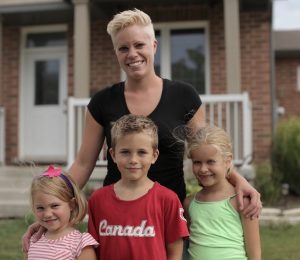This post is sponsored, but the opinions expressed are our own. Help! We’ve Got Kids is a free resource, supported by advertising from relevant sponsors.
For parents of young children, thinking about the future can be overwhelming. You’re just trying to get through the day-to-day of life with kids and all the curveballs that come along with it. College or university may feel like a lifetime away—but with a bit of planning and preparation now, you can take some of the stress out of that major milestone when it arrives. The first step? Consider a Registered Education Savings Plan (RESP).
So what is an RESP, exactly? Essentially, it’s a special type of savings account that lets you combine personal savings with accumulated interest and government grants to pay for your child’s post-secondary education.
The most important thing to know about RESPs is that it’s never too late to open one and start saving. Even if your child is older, it’s better to start saving now than not at all. With that in mind, here are the basics of RESPs, broken down, with answers to five common questions about what they are and how they work.
Who Can Open an RESP?
Anyone can open an RESP for a child, whether it’s the child’s parents, a relative, or a family friend. (You can even open an RESP without having a bank account!) To set up the savings plan, you’ll need the child’s social insurance number and birth certificate. The person who opens the RESP is known as the “subscriber” and the child is the “beneficiary.”
You can choose to open an RESP with a bank, a credit union, or with help from a financial services company. The Government of Canada website includes a list of key questions to ask when choosing an RESP provider. Don’t be afraid to ask questions until you feel confident that a plan is right for you and will best serve your needs.
Family vs. Individual RESPs: What’s the Difference?
Once you’ve selected a provider, it’s time to decide what kind of plan you need. The two main types of RESPs are individual plans and family plans. An individual plan applies to only one beneficiary. In this case, the subscriber does not need to be related to the beneficiary. With an individual plan, you could set up an RESP for your own child, or even surprise a friend or family member with an RESP for their child as a special gift.
A family RESP plan differs in that you must be related to the beneficiary. It also allows you to save for more than one child at a time. It’s worth noting that if you’re saving for more than one child with a family plan, payments don’t have to be split evenly between your children, which is helpful if one child’s education ends up costing more.
Who Can Contribute to an RESP?
Just as anyone can open an RESP for a child, anyone can contribute to one. Grandparents, aunts and uncles, and family friends may choose to mark special occasions such as birthdays with an RESP contribution that will benefit your child for years to come. Talk about a gift that keeps on giving!
How Do RESP Contributions Work?
Understanding how RESP contributions work is arguably the most confusing part of the process, because that’s when you start hearing financial terms like mutual funds, GICs, stocks, and bonds, and you might feel a bit lost. The details of how you invest in your RESP, along with how much and how often you contribute, can be discussed in greater detail and agreed upon with the financial advisor who helps you set up the plan.
Before you begin making contributions to an RESP, it helps to have an idea of just how much your child’s education is going to cost. There is some guesswork here, of course, but an RESP calculator can offer some guidance and help you set a goal.
Regardless of your plan or savings target, there are a few RESP contribution rules that apply to everyone. For example, the maximum amount of money that you can contribute over the lifetime of an RESP is $50,000 per child. That “lifetime” can be as long as 31 years from the day that you open the RESP.
One of the key benefits of opening an RESP is that you can earn additional funds for your child’s education, thanks to the Canada Education Savings Grant. Through this incentive program, the Canadian government will match 20 percent of the funds that you contribute to your child’s RESP, up to $500 per year, or a lifetime limit of $7,200.
Other grants may also be available to you, depending on your province. It’s hard to argue with free money—especially with the rising cost of education in Canada. Every little bit helps!
What Are the RESP Withdrawal Rules?
We’ve covered the basics of opening and contributing to an RESP, but what about withdrawing funds? First, it’s important to note that there are two parts of the RESP from which you can withdraw funds: your contribution amount (any money you put into the savings plan over the years) and accumulated income (interest, grant money, etc.).
Funds from personal contributions can be withdrawn from the RESP at any time. Funds from the accumulated income portion of the RESP can be withdrawn by the subscriber (you or whoever set up the plan) to pay for things like tuition, textbooks, room and board, and school supplies on behalf of the beneficiary (your child) once she or he graduates from high school and enrolls in college or university.
But what happens if your child decides to take some time off after high school, or chooses not to enroll in a post-secondary program at all? Don’t worry—you’ve still got options! Most importantly, you won’t lose any of the personal contributions that you’ve made to the plan over the years.
For more information on RESPs, visit the Government of Canada website or speak to a financial advisor near you.





Very helpful and Great information,
we appreciate advise especially coming from a professional.
Thanks again and keep up the great work!